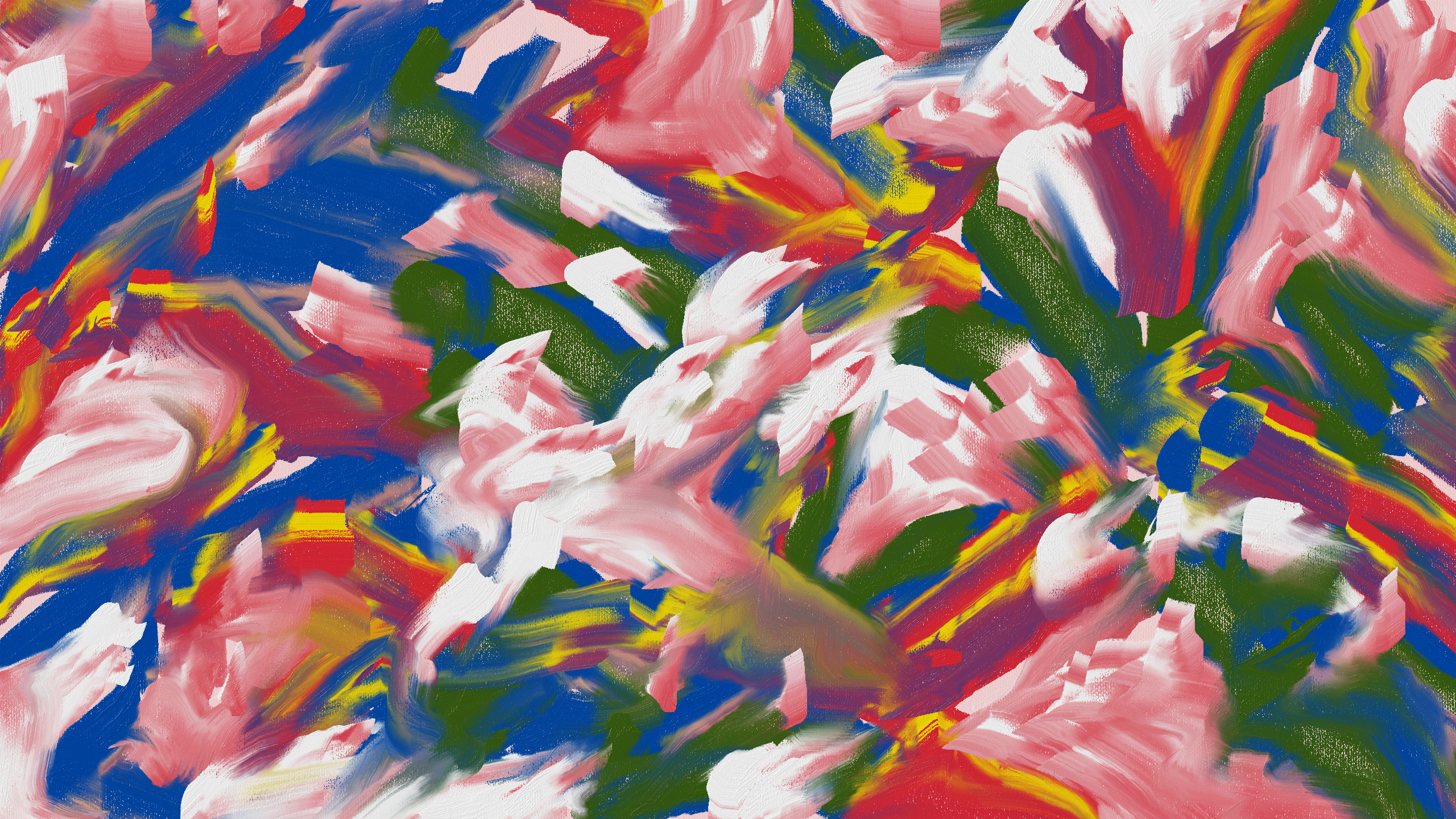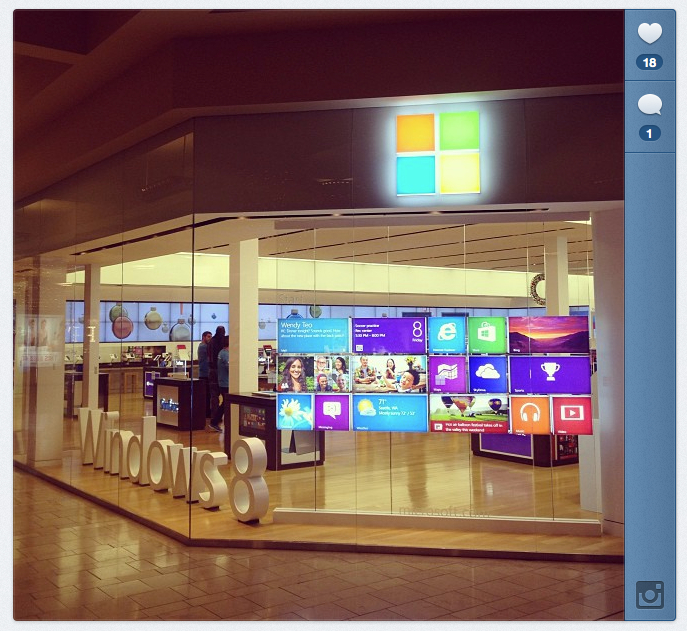
Bruce Sterling recently suggested that it no longer makes sense to talk about “the internet” as a whole. Instead, we ought to refer to the distinct corporate structures that define the topography of experience online: Apple, Google, Amazon, Facebook, and Microsoft. These companies provide users with similar services and, increasingly, they organize them in self-sufficient “silos” to encumber disloyal users with incompatibility issues. Sterling’s claim that there’s no more internet sounds premature and calculated to provoke buzz (cf. Wired’s September 2010 cover story, “The Web Is Dead”), but it’s useful nevertheless as a reminder of the limits on the user’s agency as these companies attempt to consolidate their control over information and bind the net to their devices.
With that in mind, Michael Manning’s Microsoft Store Paintings might be seen as a proposition about what happens to internet art when doesn’t make sense to talk about the internet. The digital abstractions are painted at locations of the retail chain named in the series’ title, sometimes at the first-ever Microsoft store in Mission Viejo, CA, which opened in 2009. Microsoft’s retail outlets are, of course, a riposte to the success of Apple’s stores, launched after two decades when the software giant happily dispersed its products through Best Buy and CompUSA. They herald the non-internet seen by Sterling.

An image of a Microsoft Store from Michael Manning's Instagram
A list of the things that Manning uses to make the paintings his Microsoft series would include his fingers, Fresh Paint (the default painting program in Windows 8), a Microsoft touchscreen computer, and the Microsoft store itself, since he’s never bought a device there to take home. (He doesn’t have an iPad either; his iPad paintings are made on devices borrowed from family and friends. The only painterly apparatus he owns is his iPhone, which he uses to contribute to the Phone Arts blog.) With no studio and no gallery, not even a keyboard or a mouse, painting becomes a function of the tools provided by a major corporation and the user’s physical contact with them. Manning’s operation of this function yields great results, but I won’t describe them in depth; as much as I enjoy looking at painting I don’t really like to write about it. And besides, the process of scrolling through the many paintings on Manning’s sites encourages the viewer to skim the visual content of any single work, to consider instead their common stylistic traits or the conditions of their making. Untitled beyond the indication of a device in the series name, the paintings have a sameness that partially masks Manning’s hand and highlights how software functions influence the movement of his fingers. No wonder he relishes the Pinterest thread where moms debate whether their toddlers could paint on the iPhone as well as he does.

As a result, his paintings seem to suggest an enthusiastic embrace of corporate control over user creativity. But when Manning organized a Street Show outside Eyebeam in the summer of 2011, he meant the gesture of putting digital art offline as a dig at its innate incompatibility with the art market’s concern for scarcity (the show was uploaded to the internet within hours of the opening). Similarly, while the Microsoft Store Paintings are ostensibly anchored to branded devices—even to their points of sale—they are distributed via Tumblr, Facebook, Snapchat or whatever other platform is handy. The image of the internet and the corporate consolidation of its parts that appears in Manning’s paintings, then, is not a neat array of self-contained silos, humming away busily as users operate inside their confines, but rather a messy mass of overlapping and colliding edifices, with the artful user at play in the openings between them.


